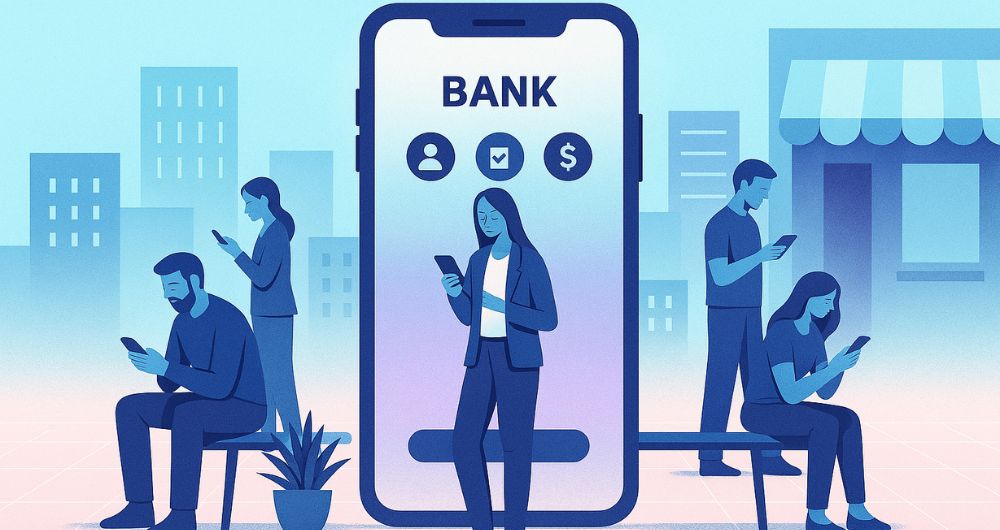
Imagine being able to predict and respond to your customer’s needs at the exact moment they arise. This is the power of Next Best Actions (NBAs) in banking. By using real-time data and sophisticated analytics, NBAs guide banks in determining the most effective action to take for each customer, enhancing engagement and boosting loyalty. This approach transforms every interaction into an opportunity to provide value.
In this post, we will explore NBAs’ advantages, provide key use cases and practical implementation strategies, and explain why Latinia is the perfect partner for leveraging NBAs in banking.
Why Implement Next Best Actions in Banking
Benefits of NBAs for Banks
Next Best Actions (NBAs) offer numerous benefits to banks, revolutionizing how they interact with customers and manage their operations:
- Enhanced Customer Experience: By leveraging real-time data, banks can deliver personalized and timely interactions that meet each customer’s specific needs and preferences, leading to higher satisfaction and loyalty.
- Increased Revenue: Targeted promotions and personalized offers boost cross-selling and upselling opportunities, directly impacting the bank’s profitability.
- Operational Efficiency: Automating customer interactions streamlines processes, reduces the workload on customer service teams, and ensures consistent communication.
- Reduced Churn: Proactive engagement helps address customer needs promptly, reducing the likelihood of customers switching to competitors.
- Data-Driven Decisions: Advanced analytics enable banks to understand customer behavior better, predict future needs, and make informed strategic decisions.
Impact on Customer Experience
Implementing NBAs transforms customer interactions by making them more relevant and timely. This personalized approach significantly improves the overall customer experience:
- Personalized Offers: Customers receive offers and recommendations that are tailored to their specific needs and preferences, making interactions more meaningful.
- Timely Interventions: Real-time data allows banks to intervene at critical moments, such as when a customer is about to make a purchase, enhancing the relevance of the communication.
- Consistency: Automated interactions ensure customers receive consistent messages across different channels, reinforcing the bank’s brand and reliability.
- Proactive Support: By anticipating customer needs, banks can provide proactive support, addressing issues before they escalate and fostering a sense of trust and reliability.
In essence, NBAs help banks create a more engaging and satisfying customer journey, which in turn fosters loyalty and long-term relationships.
Use Cases of Next Best Actions in Banking Marketing
Next Best Actions (NBAs) can be tailored to meet various customer needs and enhance banking marketing strategies. Here are some key use cases with concrete examples:
1. Offering Co-Branded Credit Cards
Banks can partner with popular brands to offer co-branded credit cards with exclusive benefits, such as discounts and rewards at specific stores. This adds value for the customer and strengthens the partnership between the bank and the brand.
Example:
- Target: Customers frequently shop at a specific retail store.
- Profile: Regular shoppers with moderate to high spending patterns.
- Trigger: Customer makes a purchase at the store.
- NBA: A personalized email offering a co-branded credit card with exclusive benefits, such as 5% cashback on purchases at that store.
Specific Scenario:
A customer who frequently shops at an electronics store receives an email offering a co-branded credit card with 5% discounts on all store purchases.
2. Offering Deferred Purchases
Deferred purchase options allow customers to split their payments into manageable installments. Banks can use NBAs to promote these options precisely when customers are making significant transactions.
Example:
- Target: Customers making high-value transactions.
- Profile: Customers with a history of large purchases or those nearing their credit limit.
- Trigger: Customer attempts to make a purchase over a certain amount, such as $500.
- NBA: A push notification or SMS offering an option to split the payment into six monthly installments.
Specific Scenario:
A customer buying a $1,000 sofa receives a push notification at checkout suggesting they defer the payment over six months, making it more affordable.
3. Increasing Card Usage through Partnerships
Banks often have extensive portfolios of benefits through partnerships with various merchants. However, customers may not always be aware of these benefits. NBAs can help by sending targeted reminders and offers based on customer location and shopping habits.
Example:
- Target: Customers near partner merchant locations.
- Profile: Frequent shoppers or diners, often using their bank card for payments.
- Trigger: Customer makes a payment near a partner merchant’s location.
- NBA: A real-time push notification offering a discount or reward for using the bank’s card at the partner merchant.
Specific Scenario:
When a customer makes a payment near a popular coffee shop that partners with the bank, they receive a push notification offering a 10% discount if they pay with their bank card.
4. Product Placement
Product placement involves recommending financial products that meet customers’ specific needs. By understanding customers’ financial behavior and preferences, banks can provide relevant product recommendations that are likely to be well-received.
Example:
- Target: Customers showing interest in saving or investing.
- Profile: Customers with regular deposits or significant savings.
- Trigger: Customer makes a large deposit into their savings account.
- NBA: A recommendation sent via email or in-app notification to open a high-yield savings account or invest in a mutual fund.
Specific Scenario:
A customer who frequently deposits large sums of money into their savings account receives an in-app notification suggesting they invest in a high-yield certificate of deposit (CD) for better returns.
Business Cases for Next Best Actions

How Banks Generate Business
Research has shown that certain use cases for Next Best Actions are particularly effective because they directly contribute to the bank’s revenue. Here are the primary ways these NBAs generate business:
- Product Placement: When a customer signs up for a product and activates it, the bank earns a recurring income from fees and associated insurance. This is true regardless of how much the customer uses the product. For example, credit cards often generate fixed income from annual fees and additional revenue from interest on balances.
- Increased Product Usage: Partnerships and co-branded products are designed to increase the usage of bank services. Each transaction made with these products generates interbank transfer fees, making frequent users highly profitable. For instance, every transaction with a credit card or digital wallet generates a small fee, adding up significantly with high usage.
- Reducing Projected Delinquency: With rising interest rates, many customers are at risk of becoming delinquent on their debts. NBAs can identify these at-risk customers and offer debt refinancing options to help manage their payments. The optimal time to offer refinancing is when a customer makes a payment, providing immediate assistance to avoid future defaults.
Total Economic Impact (TEI)
Latinia commissioned Forrester Research to conduct a Total Economic Impact (TEI) study to analyze the return on investment (ROI) of its Real Time Decisions Engine. The study concluded that clients using this solution could achieve an ROI of 162% over five years and recover their investment in less than six months.
How to Implement Next Best Actions: Practical Guide
Implementing Next Best Actions (NBAs) in banking requires a strategic and systematic approach. Here is a practical guide to help you get started:
1. Defining Objectives and Selecting Customers
Start by clearly defining the objectives of your Next Best Actions initiatives. Determine whether you aim to increase product adoption, boost transaction volumes, or reduce customer churn. Once objectives are set, identify and segment your customer base. Use data analytics to target customers most likely benefit from specific actions.
- Example Objective: Increase credit card usage among low-activity customers.
- Customer Segment: Customers with credit cards who haven’t made a purchase in the last 30 days makes a small purchase after a period of inactivity.
2. Identifying Key Moments
Identify critical moments in the customer journey where NBAs can make the most impact. These moments could be triggered by specific transactions, changes in customer behavior, or significant life events.
- Example Key Moment: When a customer makes a significant purchase or has a sudden increase in account balance.
3. Best Practices for NBAs
Implementing NBAs effectively involves following best practices to ensure successful outcomes:
- Personalization: Tailor messages and offers to individual customer preferences and behaviors.
- Timeliness: Deliver NBAs at the most relevant times to maximize their impact.
- Relevance: Ensure that the actions suggested are meaningful and add value to the customer.
- Consistency: Maintain a consistent tone and approach across all customer interactions.
4. Channel and Content Strategy
Choose the right channels to deliver your NBAs, whether through email, SMS, push notifications, or in-app messages. Ensure the content is clear, concise, and compelling to encourage customers to take action.
- Example Channel: Push notifications for immediate and time-sensitive offers.
- Example Content: “You’ve earned double reward points on your recent purchase! Use your card for your next purchase to earn more points.”
Why Choose Latinia for Implementing NBAs
Latinia’s Next Best Action solution is a comprehensive, real-time business rules engine designed specifically for the banking sector. It utilizes real-time customer transaction analytics to deliver highly relevant and timely interactions, ensuring that each communication meets the customer’s immediate needs and preferences.
The platform provides a suite of functionalities, including geolocation-based actions and virtual NBA testing, which allows banks to simulate and optimize actions before deploying them live. This feature helps in refining strategies to ensure maximum effectiveness.
Latinia’s user-friendly interface enables banks to seamlessly design, evaluate, measure, and optimize customer engagement strategies. By integrating with existing banking systems, the platform enhances operational efficiency and supports a smooth implementation process.
The benefits of using Latinia’s Next Best Action solution include increased customer satisfaction, enhanced engagement, and higher conversion rates. Additionally, Latinia’s technology supports scalability, allowing banks to manage growing volumes of customer interactions without compromising performance.
Conclusion
Implementing Next Best Actions (NBAs) in banking offers significant benefits, including enhanced customer engagement, increased product usage, and reduced delinquency risks. By leveraging real-time data and sophisticated analytics, banks can deliver personalized, timely, and relevant interactions that meet their customers’ immediate needs.
Latinia’s Next Best Action offers a robust and flexible solution that enhances customer interactions through real-time analytics, comprehensive functionality, and seamless integration, making it an ideal choice for banks looking to elevate their customer engagement strategies.
Ready to transform your customer interactions? Contact Latinia today to learn more about how their Next Best Action solution can help your bank thrive.
Categories: Case Studies

